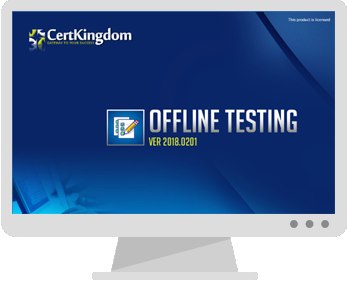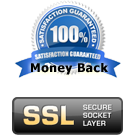Exam: FCSS_SASE_AD-24

|
|||||||||||||||||||||||||||
Exam format and requirements
Exam Name: FCSS - FortiSASE 24 Administrator
Exam Code: FCSS_SASE_AD-24
Duration: 60 minutes
Number of Questions: 30
Question Type: Multiple-choice and drag-and-drop
Passing Score: Answers must be 100% correct for credit; no partial credit is
given
Description
The FCSS in SASE certification validates your ability to secure application
and enterprise networks across multiple branches and geographic locations using
Fortinet SASE solutions. The certification exams cover the design, deployment,
and management of advanced SASE infrastructures.
Exam topics and objectives
The exam tests your applied knowledge in four key areas:
SASE architecture and components
Integrating FortiSASE within a hybrid network
Identifying FortiSASE components
Constructing FortiSASE deployment cases
SASE deployment
Implementing various user onboarding methods
Configuring SASE administration settings
Applying security posture checks and compliance rules
Security services (SIA, SSA, and SPA)
SIA (Secure Internet Access): Designing security profiles for web filtering
and content inspection.
SSA (Secure SaaS Access): Using Cloud Access Security Broker (CASB)
functionalities to secure SaaS applications.
SPA (Secure Private Access): Deploying ZTNA and SD-WAN with FortiSASE.
Analytics
Identifying security threats using FortiSASE traffic logs
Configuring dashboards and logging settings
Analyzing reports for traffic and security issues
Preparation resources
Fortinet offers several resources to help candidates prepare for the exam:
Official Training Course: The FCSS - FortiSASE 24 Administrator course is
available on the Fortinet Training Institute website.
Hands-on Experience: Practical experience with FortiSASE, FortiClient, and other
related products is highly recommended.
FortiSASE Documentation: The Administration Guide, Reference Guide, and various
Deployment Guides are valuable resources.
Sample Questions: Sample questions are available through the official Fortinet
Training Institute course and third-party practice test sites.
FCSS_SASE_AD-24 Brain Dumps Exam + Online / Offline and Android Testing Engine & 4500+ other exams included
$50 - $25 (you save $25)
Buy Now
QUESTION 1
Refer to the exhibits.
A FortiSASE administrator has configured an antivirus profile in the security
profile group and applied
it to the internet access policy. Remote users are still able to download the
eicar.com-zip file from
https://eicar.org. Traffic logs show traffic is allowed by the policy.
Which configuration on FortiSASE is allowing users to perform the download?
A. Web filter is allowing the traffic.
B. IPS is disabled in the security profile group.
C. The HTTPS protocol is not enabled in the antivirus profile.
D. Force certificate inspection is enabled in the policy.
Answer: D
Explanation:
QUESTION 2
An organization wants to block all video and audio application traffic but
grant access to videos from
CNN Which application override action must you configure in the Application
Control with Inline- CASB?
A. Allow
B. Pass
C. Permit
D. Exempt
Answer: A
QUESTION 3
Refer to the exhibits.
When remote users connected to FortiSASE require access to internal resources on
Branch-2. how will traffic be routed?
A. FortiSASE will use the SD-WAN capability and determine that traffic will be
directed to HUB-2. which will then route traffic to Branch-2.
B. FortiSASE will use the AD VPN protocol and determine that traffic will be
directed to Branch-2 directly, using a static route
C. FortiSASE will use the SD-WAN capability and determine that traffic will be
directed to HUB-1, which will then route traffic to Branch-2.
D. FortiSASE will use the AD VPN protocol and determine that traffic will be
directed to Branch-2 directly, using a dynamic route
Answer: D
Explanation:
QUESTION 4
What are two advantages of using zero-trust tags? (Choose two.)
A. Zero-trust tags can be used to allow or deny access to network resources
B. Zero-trust tags can determine the security posture of an endpoint.
C. Zero-trust tags can be used to create multiple endpoint profiles which can be
applied to different endpoints
D. Zero-trust tags can be used to allow secure web gateway (SWG) access
Answer: A,B
Explanation:
Zero-trust tags are critical in implementing zero-trust network access (ZTNA)
policies. Here are the
two key advantages of using zero-trust tags:
Access Control (Allow or Deny):
Zero-trust tags can be used to define policies that either allow or deny access
to specific network
resources based on the tag associated with the user or device.
This granular control ensures that only authorized users or devices with the
appropriate tags can
access sensitive resources, thereby enhancing security.
Determining Security Posture:
Zero-trust tags can be utilized to assess and determine the security posture of
an endpoint.
Based on the assigned tags, FortiSASE can evaluate the device's compliance with
security policies,
such as antivirus status, patch levels, and configuration settings.
Devices that do not meet the required security posture can be restricted from
accessing the network
or given limited access.
Reference:
FortiOS 7.2 Administration Guide: Provides detailed information on configuring
and using zero-trust
tags for access control and security posture assessment.
FortiSASE 23.2 Documentation: Explains how zero-trust tags are implemented and
used within the
FortiSASE environment for enhancing security and compliance.
QUESTION 5
Refer to the exhibit.
In the user connection monitor, the FortiSASE administrator notices the user
name is showing
random characters. Which configuration change must the administrator make to get
proper user information?
A. Turn off log anonymization on FortiSASE.
B. Add more endpoint licenses on FortiSASE.
C. Configure the username using FortiSASE naming convention.
D. Change the deployment type from SWG to VPN.
Answer: A
Explanation:
In the user connection monitor, the random characters shown for the username
indicate that log
anonymization is enabled. Log anonymization is a feature that hides the actual
user information in
the logs for privacy and security reasons. To display proper user information,
you need to disable log anonymization.
Log Anonymization:
When log anonymization is turned on, the actual usernames are replaced with
random characters to protect user privacy.
This feature can be beneficial in certain environments but can cause issues when
detailed user monitoring is required.
Disabling Log Anonymization:
Navigate to the FortiSASE settings.
Locate the log settings section.
Disable the log anonymization feature to ensure that actual usernames are
displayed in the logs and user connection monitors.
Reference:
Buy Complete
Certainly, here's a rewritten version of your text:
Packiam Vijendran 1 months ago - Malaysia
Passed the exam yesterday, 95% of the question were from this site. Note: Pay
more attention to all the community discussions on each question, instead of the
answers provided by the examtopics and I strongly suggest to get the contributor
access.
upvoted 4 times
Javier Cardaba Enjuto 2 months, 1 week ago - Spain
Excellent pre-exam session tool
upvoted 2 times
Palanisamy Arulmohan 1 months, 1 week ago - USA
I passed today, 94 questions asked and 99% of them were in this dump.
3 labs: BGP (as-override), HSRP, OSPF (without network statement)
upvoted 4 times
peppinauz 3 months, 2 weeks ago
I pass my exam, dump is valid about 90-95%. review the community answers!!
upvoted 6 times
Oberoi Ankit3 months, 3 weeks ago - USA Texas
Passed exam today dump still accurate. almost all the questions are here, some
are overcomplicated or incomplete on the site,
upvoted 4 times
logged members Can Post comments / review and take part in Discussion
Certkingdom Offline Testing Engine Simulator Download
Prepare with yourself how CertKingdom Offline Exam Simulator it is designed specifically for any exam preparation. It allows you to create, edit, and take practice tests in an environment very similar to an actual exam.
Supported Platforms: Windows-7 64bit or later - EULA | How to Install?
FAQ's: Windows-8 / Windows 10 if you face any issue kinldy uninstall and reinstall the Simulator again.
Download Offline Simulator-Beta
Certkingdom Testing Engine Features
- Certkingdom Testing Engine simulates the real exam environment.
- Interactive Testing Engine Included
- Live Web App Testing Engine
- Offline Downloadable Desktop App Testing Engine
- Testing Engine App for Android
- Testing Engine App for iPhone
- Testing Engine App for iPad
- Working with the Certkingdom Testing Engine is just like taking the real tests, except we also give you the correct answers.
- More importantly, we also give you detailed explanations to ensure you fully understand how and why the answers are correct.
Certkingdom Android Testing Engine Simulator Download
Take your learning mobile android device with all the features as desktop offline testing engine. All android devices are supported.
Supported Platforms: All Android OS EULA
Install the Android Testing Engine from google play store and download the app.ck from certkingdom website android testing engine download

Certkingdom Android Testing Engine Features
- CertKingdom Offline Android Testing Engine
- Make sure to enable Root check in Playstore
- Live Realistic practice tests
- Live Virtual test environment
- Live Practice test environment
- Mark unanswered Q&A
- Free Updates
- Save your tests results
- Re-examine the unanswered Q & A
- Make your own test scenario (settings)
- Just like the real tests: multiple choice questions
- Updated regularly, always current




